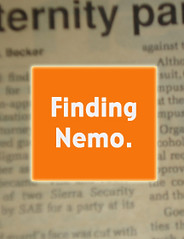Considering some public relations professionals are still smarting from Chris Anderson, editor in chief of Wired, and wondering if anyone loves them (boo hoo), I thought it might be useful to provide a few basics so some don’t have to keep learning the hard way.
Sure, I know working in public relations is not necessarily easy, but it does not have to be exceedingly hard either. Every spring, I share six tips with public relations students at the University of Nevada, Las Vegas (UNLV) on how to be an effective public relations practitioner:
• Think like a journalist
• Act like a businessperson
• Dig deeper than a lead investigator
• Write with the passion of a novelist
• Speak with the conviction of a communicator
• Exhibit empathy like an advocate for various publics
It’s no easy task, and not everyone is capable. But the best and the brightest in the field all have these qualities (at least the ones I know). Unfortunately, the great majority of public relations professionals (about 80 percent, I might guess) never even make it past the first bullet. So that's all I'm going to write about today.
It's not about how many of their posts or articles you read; thinking like a journalist is all about finding Nemo.
That's right. You need to find "the better fish story." And based on box office gross alone, Nemo was the best fish story of all. Seriously, that movie contained almost everything needed to make the news.
Here’s my quick tip sheet for public relations students, which originated with Jake Highton, a longtime journalism professor at the University of Nevada, Reno as well as some tips from the The Missouri Group. I’ve added and embellished them over the years, working with a foot in each field.
What Makes News Or How To Find A Nemo?
Impact. How much is an audience effected, how direct is the impact, and how immediate is the effect? The greater the impact or magnitude, the more likely it is news.
Proximity. How close is the action to a locality or how direct to a specific industry? The closer the connection is to home or to a particular audience, the more likely it is news.
Timeliness. When is the action is occurring or when did it occur? The fresher the story, the more likely it is news.
Importance/Effects Of Change. How will it change people’s lives, like a new law or a price increase? The more it changes people’s lives, the more likely it is news.
Prominence. Who is involved and do people know who they are or what company they work for? The more prominent the individual or company, the more likely it is news.
Conflict. How volatile are the combatants and how colorful are the characters? The bigger the conflict or rashness of the characters, the more likely it is news.
Novelty. Does it occur often or infrequently? The more uncommon the occurrence, the more likely it is news.
Human Interest. How touching is the act of kindness? The greater or more direct the gift, the more likely it is news.
Sensitivity. How disastrous or emotional is the result? The greater the misfortune, the more likely it is news.
Special Interest. Does the editor of the publication have an interest in the subject matter? The more specialized the story to a specific publication, the most likely it is news.
Almost all stories need at least one of these elements (generally, more than one) to be considered news by most journalists. It’s about that simple. If you have many, you have yourself a Nemo.
Do you get it now? At the very least, it might dispel the mystery of why a small company launching a new widget is probably spam as opposed to a salmon. It also explains why the huge whale tale seems to have been the Apple iPhone (called the invention of the year no less).
So there you have it. Where some (not all) public relations professionals are going wrong is that they are promising clients a certain amount of releases every month, but never look for anything that remotely resembles a minnow let alone a clown fish.
Who knows? Maybe that will make my "stars align" comment more palatable. That point was never meant to suggest more spam.
I was making the case that even if you have a Nemo, someone else might have a Nemo plus one. Too bad. It sucks. But there is only so much time or space a journalist or editor (or even a blogger) has to work with today, tomorrow, next week, or all year.
The general lesson is simple: don’t waste their time, especially since the average journalist’s salary is $30,000 per year and the average public relations professional is paid about twice that, which is why I can almost guarantee that the “it’s my job" sob or “you need me" cry or “I’m too busy to use AP Style" whine won’t really cut it. If anything, it will probably strain the relationship even more so. Instead of crying or inventing formulas, go find the better fish story.
And while you're at it, treat those journalists with respect. And, if they don’t respect you back right away, try to remember that other PR folks have probably lied to them a hundred times (just last week). So I'm sorry, but it's the burden of the PR professional to overcome any barriers caused by others in the field. Reporters owe you (or me) nothing. Not even a return call.

















1 comments:
A few more words:
Jack Flack, Conde Nast Portfolio, interviews Anderson:
http://www.portfolio.com/views/blogs/business-spin
Post a Comment